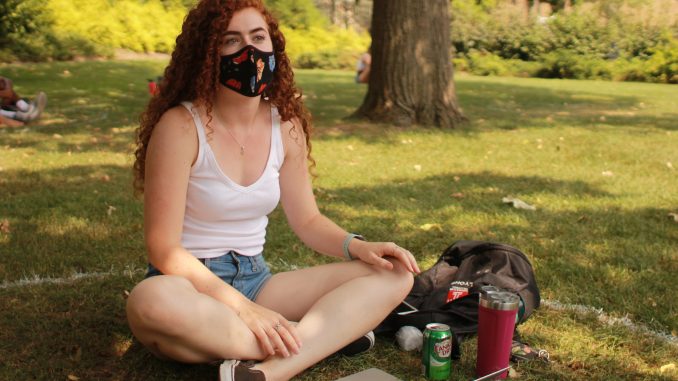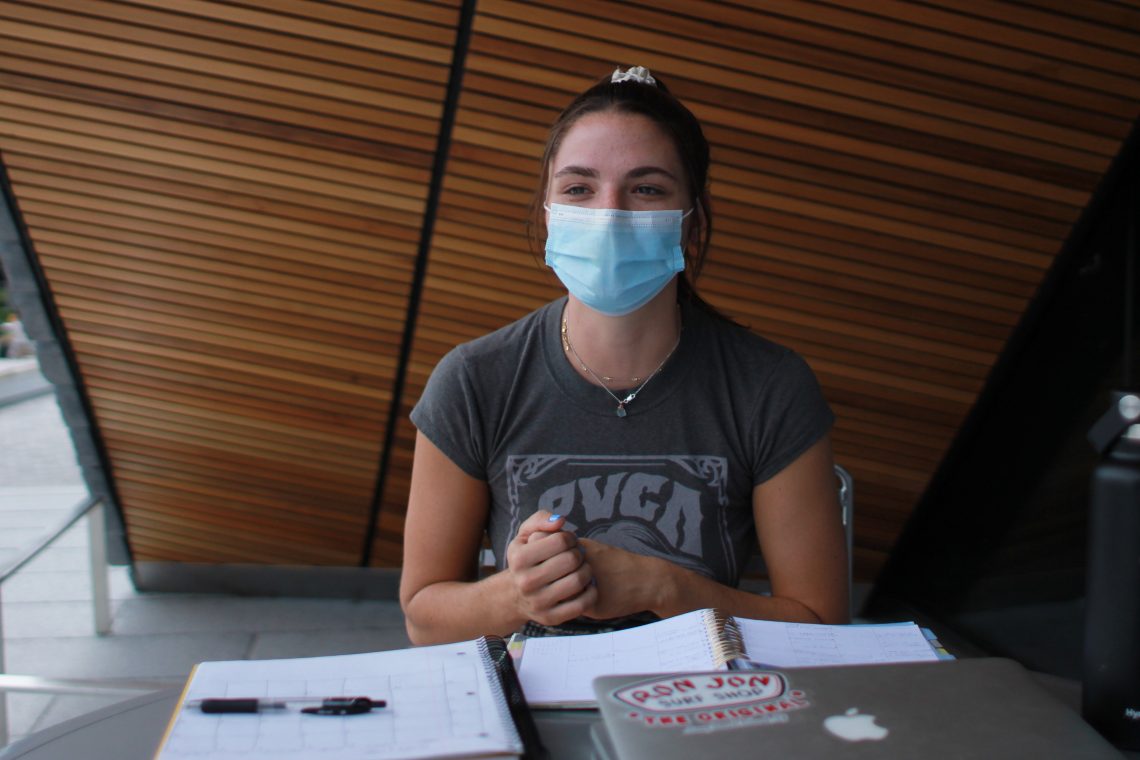
Mask-covered faces, spaced-out desks and classrooms that “feel like a hospital.”
Temple University looks very different from the school Gabrielle Lyons attended the last three years.
Lyons, a senior English major, has three courses fully online and two with a hybrid schedule, meaning some sessions are held in person while some are online. The result is that she only needs to spend one day on campus each week.
“It’s kind of a weird mixture to figure out how to get work done in my room, and also do classes in my room, and not get tired of being in there,” Lyons said.
Temple reopened Main Campus for the fall semester under a hybrid model beginning this week, offering a mix of online classes and in-person learning. As a part of the university’s return plan, Temple is requiring students to wear face coverings in buildings and maintain six feet of physical distance from one another to mitigate the spread of COVID-19.
On the first day of classes, some students and faculty were happy and felt safe being back on campus, while others felt holding in-person classes was dangerous and protested it, The Temple News reported.
Mark Denys, the director of Student and Employee Health Services, wrote in an email to The Temple News he felt opening week “went well.”
The university’s mandatory move in-testing “went very smoothly” and there were fewer positive COVID-19 tests than anticipated during it, Denys wrote.
As of today, Temple has reported 58 active cases of COVID-19 among students.
The university required COVID-19 tests for all students moving into campus housing, as well as students and faculty living off-campus who had traveled from states with 90 or more cases per 100,000 residents reported in the past two weeks, The Temple News reported. These tests were provided free of charge and took place at the Aramark Student Training and Recreation Complex.
Student and Employee Health Services is recording testing it completes, as well as testing students and faculty self-report, on the university’s case dashboard, Denys wrote in an email to The Temple News.
Sophomore music theory student Doug DeVincent said he is much more purposeful about leaving his apartment than in years past, as it has felt isolating to be at home all the time.
“I’m happy we can at least still walk around campus and socialize in some ways,” DeVincent said. “If I see people that I know on campus, I’m able to at least say ‘hi’ to them.”

The university reduced in-person capacity in classrooms from more than 15,600 available seats to roughly 3,300, The Temple News reported. The number of students attending in-person classes dropped from 27,000 last year to under 9,000 this year.
Miya Wagner, a junior communications major, said everyone wearing masks and staying physically distant is making her classes much less interactive than in previous years.
“I feel that I’m not really talking to anybody, we’re not really talking much in general, there’s not that many collaborative things going on,” Wagner said.
The university created separate entrance and exit points for classrooms and added 10 new classrooms in Paley Hall.
Faculty leading online courses can schedule virtual lectures and discussions or opt for an asynchronous approach with no set meeting times, according to an update on fall course schedules from the university.
“The hardest adjustment is really not the online teaching, it’s the fact that everybody has masks and that everyone is socially distanced,” said Kolson Schlosser, a geography and urban studies professor. “I think it’s making discussion harder in class.”
Professors must take attendance in synchronous classes to aid contract tracing, should a student or professor test positive for the virus. They cannot, however, count it towards students’ grades so students are not encouraged to attend class when they feel ill, according to a university press release.

Schlosser said he wouldn’t have penalized students for missing class regardless, but it is causing him concern that attendance in his classes will drop as the semester progresses.
“I was ambivalent before about whether I wanted to teach in person or teach online during a pandemic,” Schlosser said. “Now, like a lot of faculty, I really am starting to wish we had gone just entirely online.”
Bradley Gardener, a geography and urban studies professor, said he has been teaching online classes for the last three years whenever the opportunity to do so was presented.
“When we go online, we have to be very specific about what our expectations are, and I think it makes us all better teachers,” Gardener said. “Once we get these courses in working shape, and it’s clear what students are supposed to do, I think they’ll appreciate it, too.”
Temple’s reopening plan, which includes requests for students and faculty to quarantine for 14 days before returning to campus, required COVID-19 testing for on-campus and symptomatic groups and regular, voluntary testing of asymptomatic groups. The plan will be reevaluated in September based on changes in testing needs or to accommodate new technology, the university wrote in an information guide.
“I understand why everything is the way that it is, I just can’t wait until we’re somewhat normal,” Wagner said. “But what even is normal? What’s the next normal gonna be?”


Be the first to comment